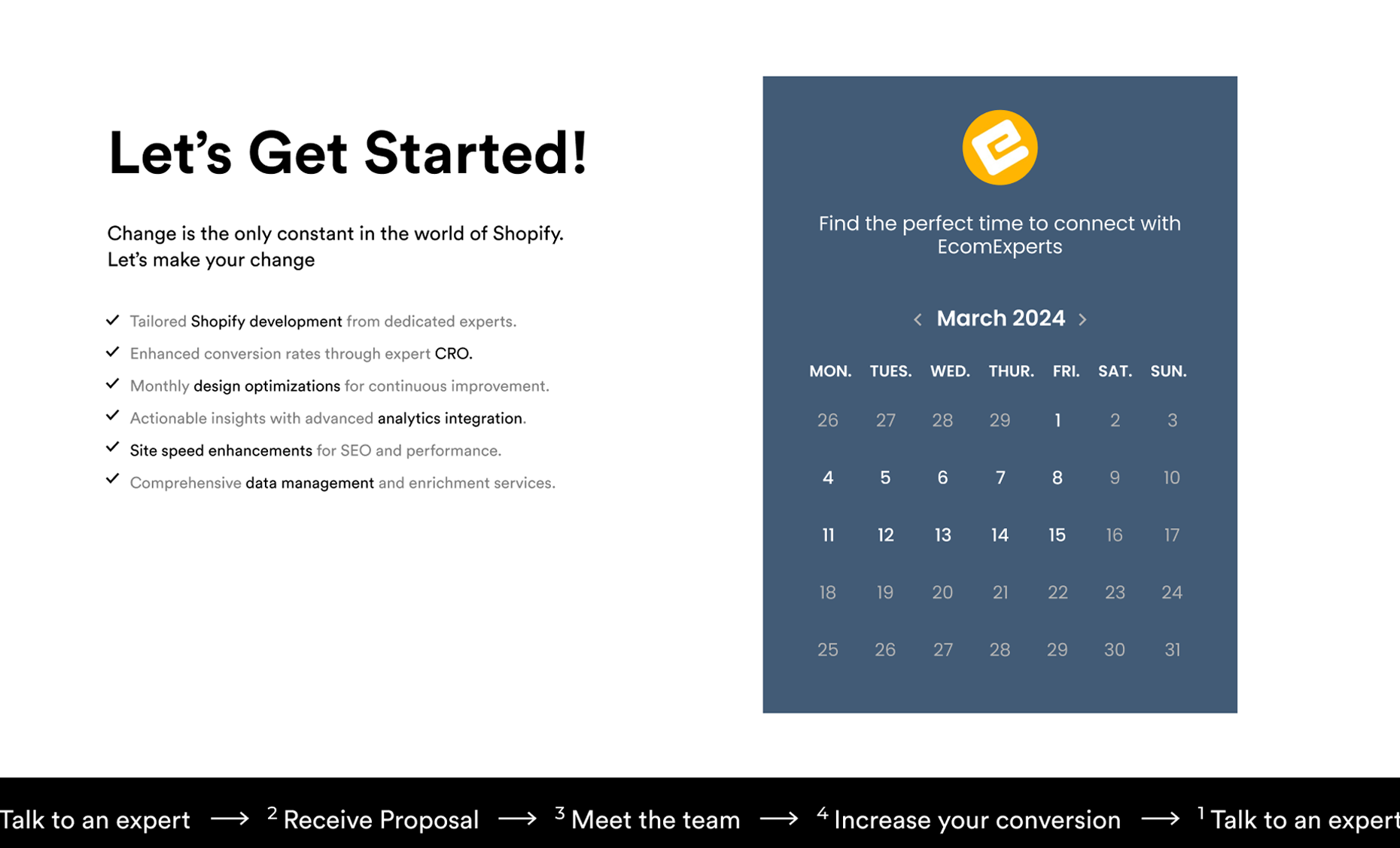Shopify 2.0 comes with great speed news, but is it time to say goodbye to site speed optimization?
We shouldn't have to remind you that fast and seamless transactions are a great way to keep your customers coming back for more.
Shopify 2.0 promises to do a lot for site speed, featuring a 35% faster theme. However, is it the savior for all Shopify speed-related problems? In this article, we have drawn up a case study using both our site and our client’s site to figure out if Shopify 2.0 will fix your store speed on its own.
Now let's consider all you need to know about Shopify OS 2.0, its speed promises, and whether or not it lives up to those promises.
What is Shopify 2.0?
In June 2021, Shopify announced that they would be taking a few steps further to improve the quality of their service to online business owners.
This was Shopify OS 2.0.
A few months later, we got to see and experience this new operating system first hand. Since its launch, Shopify 2.0 has gathered a lot of buzz, mainly because it's more organized and reliable.
It was a breath of fresh air that spelled advancement for Shopify and its users.
OS 2.0 also came with a significant speed improvement. Shopify lived up to its promise by creating a new default theme, DAWN, which is 35% faster than its predecessor, Debut.
Here’s How Shopify 2.O Improves Your Store Speed
Because this update is built right from scratch, its developers have had the chance to correct one of the most crippling faults of its original code.
They created this update in such a way that instead of piling apps right on top of your JavaScript, you can now install apps using app extensions. This is not only good for design but also a tremendous improvement for site speed as we know apps are the NO 1 culprit of slow site speed.
By doing this, they have removed any issues with left over code after app uninstallation. So when you uninstall an app, you no longer need to worry about codes laying around that may affect your site speed.
The new arrangement of code makes it weigh less, making it easier to load. The overall effect is that you can have more apps on Shopify 2.0 without compromising your page speed.
On the other hand, while this may not make such a huge difference in your store speed metrics, it may just be the margin you need.
In theory, all of this sounds great, but does it work in real life? To test it out, we ran a complete analysis of Shopify 2.0’s app integration and here’s what we found:
Before the update, apps used to run on JavaScript, and if you ask your developer they’ll confirm that JS files are heavy files that tremendously slow down site speed. With this update, we noticed that apps now utilize Shopify’s liquid code; so the codes are less heavy. So, while it may not be light enough to make a difference, it’s a lot easier to control liquid files than JS files which is a plus for speed.
Will Shopify 2.0 Fix My Store Speed?
The truth is Shopify 2.0 is as close to a fresh start. Your store might seem fast at the beginning, but how long does this speed last for?
We tested this first hand in our site speed optimization of The OHM Store. While improving their store speed, OHM switched from the Debut team to Dawn on Shopify 2.0.
The expectation at first was that this switch would get their site speed up and running immediately.
However, this change did nothing to boost their store speed.
In fact, when they came to us, their Shopify store’s speed score was 22 despite being on Shopify 2.0.

It’s page speed insight score was 45.

In our analysis of Shopify OS 2.0, we looked out for three major details:
- Better performance across the board
- Faster time to first paint
- Less blocking JS
- Less code complexity.
With the OHM Shopify store, we noticed that while Shopify 2.0 greatly helps with store organization, it wouldn't take long for your site speed to fall behind again.
Think about it this way; if you had a filthy car, and instead of cleaning it up, you decide to get a new one, of course, the new one isn't going to come with dirt; it will most likely be squeaky clean. But as long as you actively use that car (and even if you don't), it'll get dirty.
Our theory: At the beginning, your store might show signs of speeding up, but it's bound to fall back either way.
Since Shopify 2.0 made no speed impact, this meant that we could now move on to optimizing the OHM Shopify Store as we would any other store.
As usual, the dev team began optimizing the OHM Shopify store by running speed checks to determine the before results. Once this was done, we could now look at the waterfall to identify the speed killers slowing down the store.
The team found the bulk of the problem to be connected to the store's codes and scripts and could now move on to fixing them.
To fix the OHM Shopify store speed, we:
- Fixed core web vitals audit and opportunities responsible for reducing mobile and desktop scores
- Removed unused codes
- Cleaned up clutter; unused templates, theme files, unused fonts
- Restructured sections/sliders where necessary
- Applied lazy loading to prioritize apps, JavaScript, and CSS files
- Minimized JavaScript and CSS files
Next, the team checked for bugs and errors in the code; the devs passed on the project to QI once they found none.
After site speed optimization, the OHM current Shopify score is 70, and its Pagespeed Insights score is 82.


That's not all we had to try out Shopify 2.0 for ourselves. The EcomExperts Shopify store currently runs on OS 2.0 and uses the Dawn Theme. The dev team still makes time to do regular speed checks to ensure our store's speed stays in prime condition.
That said, we cannot ignore Shopify's attempts to improve site speed. Since they can't stop your page load speed from going up, Shopify 2.0 was developed with new tools to help you monitor your site speed:
Think of theme check as a spell checker but this time for code. This tool highlights areas of code that could lead to performance issues.
It does this by detecting unoptimized codes as well as codes that can be potentially dangerous.

- Shopify Lighthouse CI:
Shopify recognized that with every update, your site speed fails a little.
And that's what Shopify Lighthouse is for.
Shopify Lighthouse alerts you when a new update causes a reduction in your site speed.
With OS 2.0, Lighthouse CI is run just before a new update is applied to your store. A great detail about this tool is that it was created based on Shopify's very own speed standards.
If the update doesn't make the cut, it is rejected or returned to the board for more work.
Apart from testing and accessing the speed of new updates, it also gauges your site's SEO and functionality.
Our conclusion? While Shopify 2.0 might not totally fix your site speed problems, it makes monitoring its decline a lot easier. But we’ll let you be the judge!
What Is Shopify 2.0 Good For?
The new update seems to focus a lot on the architecture and design of your e-commerce site.
Shopify started afresh and built a new code, using the former as a template. Now, it offers more versatile designs, especially in terms of:
- The number and arrangement of sections,
- The Layout of pages,
- The fonts and font sizes.
While this update aids organization and definitely improves functionality, it is not specific for speed. So this is not an exact yes, and neither is it an exact no.
However, you should see an improvement in your conversion rates when you improve the functionality of page interactions.
So What Will Fix My Store Speed?
If you've just started with the new Shopify 2.0, you shouldn't be having any real speed issues yet, at least not unless you've been piling up codes on purpose.
Think of it this way if everyone walks all over the carpet with their shoes, you're going to have one nasty-looking carpet.
While you can decide to sweep the carpet ever so often, at some point, you're going to want to root out the problem itself by leaving the shoes outside.
You don't only take out the trash when things begin to rot, do you? No, you take it out every day, in a routine.
In the same way, you need a routine to regularly clean up your Shopify site speed to prevent any serious speed issues.
So we’ll advise paying close attention to details and conducting regular speed checks on your store.
Final Word
Following our speed tests, we arrived at one clear result, Shopify 2.0 might not be the golden bullet for optimizing your speed.
Despite being a Shopify speed optimization company, we tried to create an unbiased review of Shopify 2.0 and its impact on site speed. However, if you have a different opinion or come across a different result, please reach out to us; we’d love to hear it!












